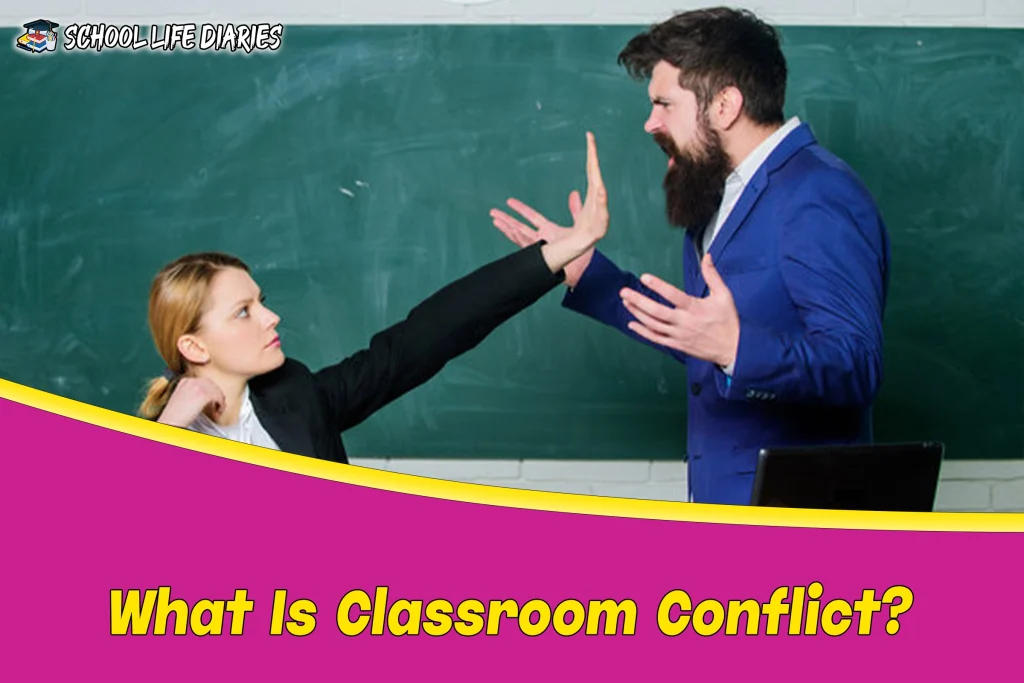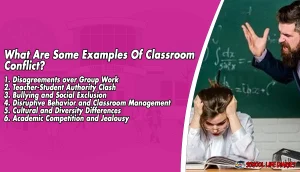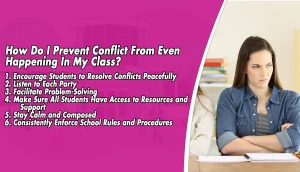Conflicts are an inevitable part of any human interaction, and schools are no exception. From disagreements between students to clashes among staff members, conflicts can arise in various forms within the school environment. In this blog post, we will delve into the realm of conflicts in schools and explore some examples that shed light on the diverse nature of these conflicts.
By understanding the different types of conflicts that can occur within educational settings, we can gain valuable insights into their underlying causes and potential solutions. So, fasten your seatbelts as we embark on a journey through real-life conflicts that take place within the walls of schools, and discover how they shape the dynamics of the educational landscape.
What Is Classroom Conflict?
Classroom conflict refers to disagreements, tensions, or disputes that arise within the classroom setting between students or between students and teachers. It is a natural part of the learning environment, where individuals with different backgrounds, perspectives, and personalities come together. Classroom conflicts can manifest in various ways, such as arguments, power struggles, bullying, or disruptions to the learning process.
These conflicts may arise due to differences in opinions, conflicting goals or interests, misunderstandings, or even external factors influencing classroom dynamics. Understanding and effectively managing classroom conflicts are essential for maintaining a positive and conducive learning environment where all students can thrive academically and socially.
What Are Some Examples Of Classroom Conflict?
1. Disagreements over Group Work:
In this scenario, conflicts may arise when students have different ideas, work styles, or levels of commitment within a group project. Conflicting opinions on the project’s direction, individual contributions, or division of tasks can lead to tensions and challenges in collaboration.
2. Teacher-Student Authority Clash:
This conflict can occur when a student challenges the authority or decisions of the teacher. It may involve questioning disciplinary actions, questioning grading criteria, or challenging classroom rules and policies, resulting in a power struggle between the student and the teacher.
3. Bullying and Social Exclusion:
Classroom conflicts can also involve bullying and social exclusion, where certain students may target or ostracize others based on their appearance, abilities, or social status. These conflicts can significantly impact the emotional well-being and academic performance of the targeted students.
4. Disruptive Behavior and Classroom Management:
Conflicts may arise when students engage in disruptive behavior, such as talking out of turn, not following instructions, or not adhering to classroom rules. These conflicts can disrupt the learning environment, impacting both the students involved and the overall classroom dynamics.
5. Cultural and Diversity Differences:
Classroom conflicts can emerge from cultural or diversity differences among students. These conflicts may occur due to misunderstandings, stereotypes, or biases. Conflicting values, beliefs, and communication styles can lead to tension and misunderstanding within the classroom.
6. Academic Competition and Jealousy:
In an academically competitive environment, conflicts can arise due to jealousy or rivalries between high-achieving students. This can manifest as a desire to outperform others, comparing grades, or seeking validation through academic achievements, creating an unhealthy competition that affects the overall classroom atmosphere.
What Are The Causes Of Classroom Conflict Among Students?
1. Differences in Personalities:
Classroom conflicts can arise from the diverse personalities of students. Some students may be outgoing and assertive, while others may be introverted and reserved. These differences can lead to clashes in communication styles, conflict resolution approaches, and social interactions within the classroom.
2. Bullying and Harassment:
One of the unfortunate causes of classroom conflict is bullying and harassment. Students who engage in bullying behavior can intimidate, belittle, or target their peers, resulting in conflicts and negative experiences for the victimized students. Such conflicts can significantly impact the overall classroom environment and hinder the learning process.
3. Personal Differences:
Students come from various backgrounds, cultures, and family dynamics, which can contribute to personal differences and potential conflicts in schools. Divergent beliefs, values, interests, or lifestyles among students may lead to misunderstandings, clashes, or tensions within the classroom.
4. Heterogeneous Ability Levels:
In classrooms with students of different ability levels, conflicts can arise due to academic disparities. Students with higher abilities may feel frustrated or unchallenged, while students with lower abilities may struggle and experience feelings of inadequacy. These disparities can lead to conflicts related to competition, comparison, or unequal treatment.
5. Poor Teaching:
The quality of teaching plays a crucial role in classroom dynamics and student engagement. Poor teaching methods, lack of clear instructions, or ineffective classroom management can contribute to student frustration, confusion, and disengagement, resulting in potential conflicts within the classroom.
How Do I Prevent Conflict From Even Happening In My Class?
1. Encourage Students to Resolve Conflicts Peacefully:
Promote a culture of respect and open communication in your classroom. Teach students conflict resolution skills, such as active listening, empathy, and assertive communication, so they can address disagreements in a peaceful and constructive manner.
2. Listen to Each Party:
When conflicts in school arise, take the time to listen to each student involved. Provide a safe and non-judgmental space where students can express their perspectives, feelings, and concerns. By actively listening, you show students that their voices are valued and that you are committed to understanding their experiences.
3. Facilitate Problem-Solving:
Help students navigate through conflicts by guiding them in problem-solving processes. Encourage them to identify the underlying issues, brainstorm possible solutions, and evaluate the consequences of their actions. Act as a mediator, fostering constructive dialogue and encouraging compromise and understanding.
4. Make Sure All Students Have Access to Resources and Support:
Ensure that all students have equal access to resources and support systems. Provide opportunities for academic and emotional support, such as tutoring, counseling services, or peer mentoring programs. This helps create an inclusive and supportive environment where students feel valued and supported in their individual needs.
5. Stay Calm and Composed:
As the teacher, it is essential to model calmness and composure, especially during conflicts. Your demeanor sets the tone for how students will approach and handle conflicts. Remain neutral, avoid taking sides, and maintain a respectful and composed attitude. This can help de-escalate tensions and encourage students to follow your example.
6. Consistently Enforce School Rules and Procedures:
Establish clear and consistent rules and procedures that promote positive behavior and respect in the classroom. Ensure that students understand the consequences of disruptive or disrespectful behavior. By consistently enforcing these rules, you create a structured and predictable environment that reduces the likelihood of conflicts.
By implementing these strategies, you create a proactive and supportive classroom environment that fosters positive relationships, effective communication, and conflict prevention. Remember that conflict resolution is an ongoing process, and empowering students with the necessary skills and resources will contribute to a harmonious and productive learning environment.
Related Article: School Cleaning: Unveiling The Importance
Final Thoughts: Conflicts In Schools
Conflicts in the classroom are not uncommon, but they can be effectively managed and prevented with the right approach. By understanding the causes of classroom conflicts, such as differences in personalities, bullying, personal differences, heterogeneous ability levels, and poor teaching, educators can proactively address these issues.
Encouraging students to resolve conflicts peacefully, actively listening to each party, facilitating problem-solving, providing resources and support, staying calm and composed, and consistently enforcing school rules and procedures are key strategies for preventing conflicts from escalating.







